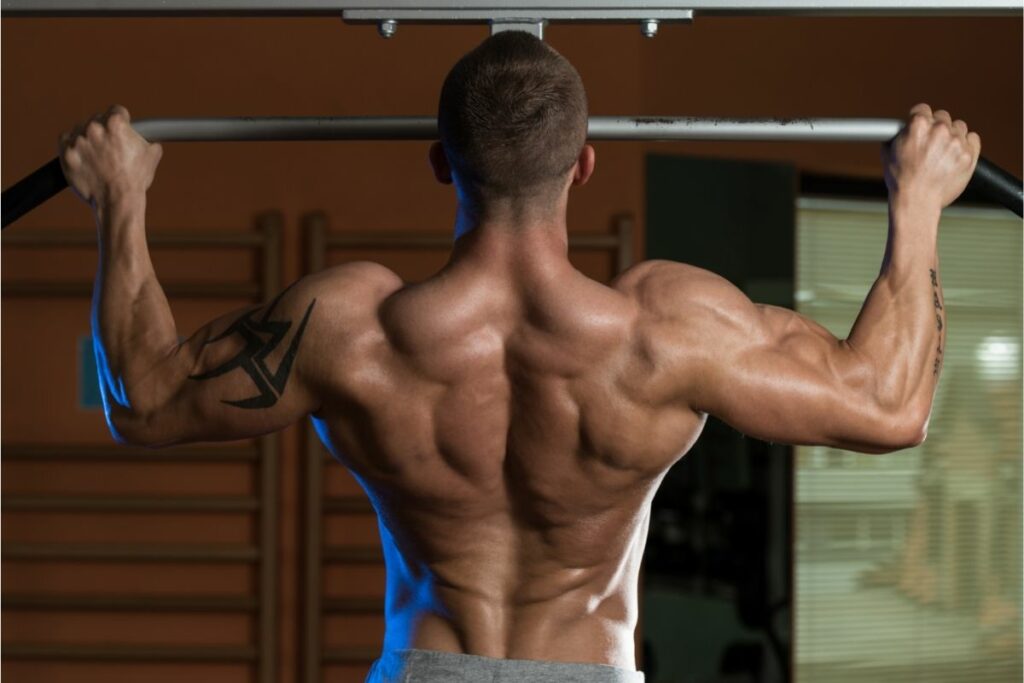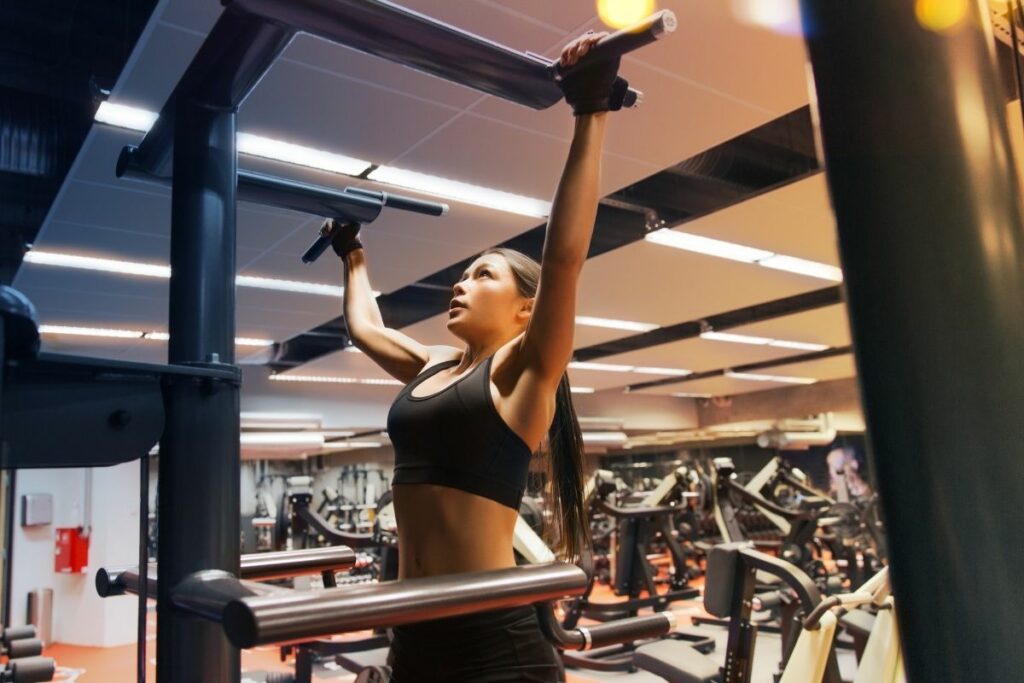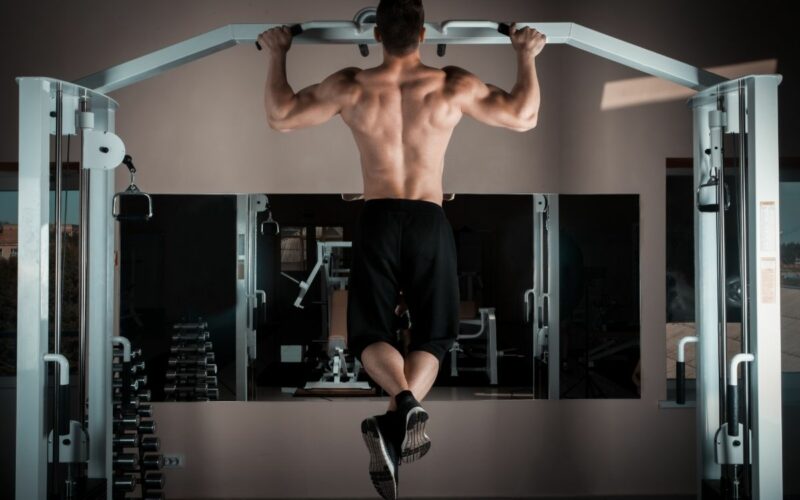Working out is incredibly important for our overall health. When it is done safely and correctly, alongside a healthy, balanced diet – it has so many benefits.
The thing is, the world of the gym can often get really confusing. With so many different machines and workout techniques and systems, we can sometimes get lost in an array of information.
One of the best workouts to opt for is the pull up. It’s simple and very effective. The crucial thing to know though is what muscles pull ups will actually work, along with the other health benefits that come with them.
In this guide, we discuss these questions and explore the effects of pull ups on your muscles and your overall health.
What Exactly Is A Pull Up?
It’s probably a good starting point to understand what a pull up actually is. Pull ups are normally performed on a bar which is located between a larger piece of apparatus.
Depending on your height, you can adjust where the bar is.
The objective of the pull up is to place your arms slightly behind your head and grab the bar with your hands. You would then lift your body weight to the point where your head goes above the bar and repeat the process.
Due to its simplicity, many people do this workout as an “inbetween” method, meaning that they do a few pull ups after doing another workout and before the next.
Additionally, its simple and inexpensive nature means that it can be performed almost anywhere – meaning you do not need to sign up for a gym membership!
It’s important to differentiate between a pull up and a chin up. A chin up is where the above exercise is performed “the other way”, which means that instead of the back of your head going past the bar, your chin will instead.
Both workouts will work similar muscles, but not exactly the same.
Some beginners to the pull up will use an assisted machine, which allows them to modify how far up they have to go and promotes safety.
What Muscles Do Pull Ups Work?
Pull ups can assist in a multitude of different muscle groups. These will include:

Back Muscles
There are plenty of back muscles that pull ups will work. Your largest muscle in the upper back is the latissimus dorsi and this goes from the middle of your back to around the arms and shoulders. This muscle is probably the most worked from a pull up.
Another is the thoracic erector spinae, which are the group of 3 muscles that follow your thoracic spine.
A third is the trapezius which are the muscles that are connected from your shoulders to your neck. These muscles are very important for things like contact sports, particularly wrestling.
Performing pull ups and bridges can help protect your neck from serious injury in these types of sports.
Finally in the back, a pull up will work the infraspinatus. This muscle will help move and extend your shoulders.
The Arm Muscles
Your forearms, biceps and triceps are all being worked during a pull up, along with your shoulder muscles. Regular and frequent pull ups can seriously build strength to these areas which have plenty of benefits.
People who struggle to pull up their full body weight can still work these muscles by simply hanging from the bar.
What Else Can Pull Ups Help With?
Perhaps one area that is often overlooked is the improvement of grip strength. Grip strength can one day save your life!
More to the point though, grip strength can help you perform sports which are very important in consistent, healthy living.
Sports such as tennis, football, golf, cricket, snooker, pool, rock climbing, darts, archery and bowling will all be benefited from improved grip strength.
Let’s also not forget that this type of strength can help other areas of life like opening jars, walking your dog or carrying in grocery shopping from the car!

Additionally, pull ups will certainly improve your general fitness level. Not only is it good for bone development and muscle strength, but it can seriously improve your fitness goals.
As a bodyweight exercise, it will enhance your weight loss!
Calories continue to burn as your body recovers from weight training, but none are more beneficial (and cheaper) than bodyweight exercises!
Performing pull ups regularly has also been suggested to manage diabetes, fibromyalgia and arthritis. Moreover, one of the more overlooked benefits is the positive impact on mental health.
Regular exercise can seriously help with people living with depression or anxiety. Although it might not fully “cure” you, it can sometimes make things more manageable.
It is, however, important to speak with a doctor if you are experiencing extreme anxiety and depression.
Due to the results that frequent pull ups will show on your body, people often exhibit a much higher level of confidence which can help in other areas of life such as job interviews and relationship building.
For beginners or advanced gym goers, it’s important to keep up with the pull up routine. Allowing too much time to pass will seriously plateau your results and force you to start at a lower level!
This is when pull ups in between other exercises are a fantastic idea, as it can keep your progress moving without focussing solely on the pull up as a primary workout.
Summary
Pull ups work so many different muscles which are hugely beneficial to our health, but this is accompanied with many more benefits.
Assisting with our mental health, confidence, body image and goals that we might have such as weight loss – pull ups should certainly not be ignored when it comes to our gym routine.
Before taking part in any large, new workout routine though – it’s wise to speak with your doctor or personal trainer.

